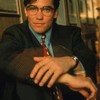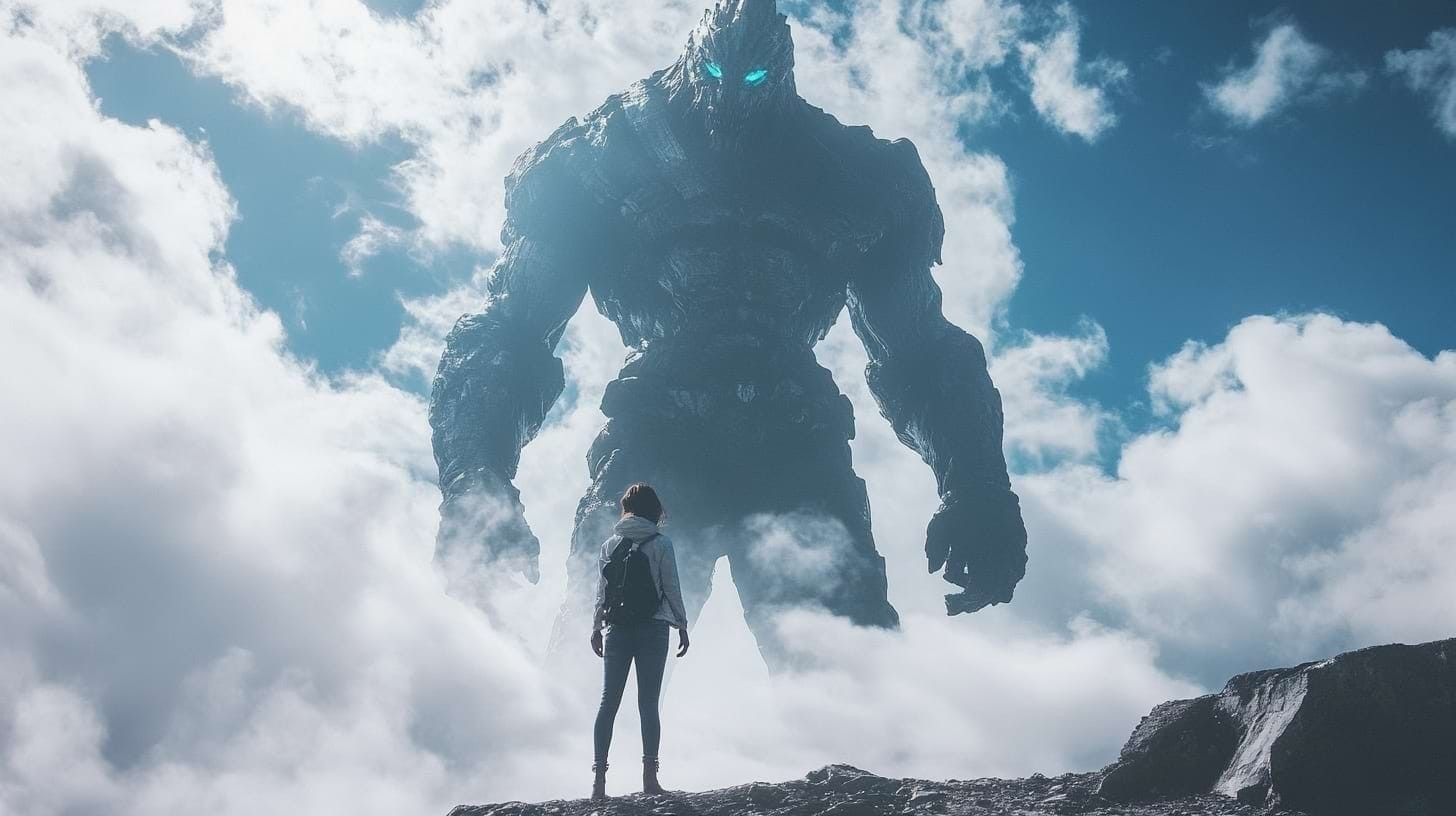The Power of a Low Angle Shot: Transforming Film Perspectives
The allure of an angle shot in films resembles an artist's brushstrokes with a camera crafting scenes. By positioning the camera and angling it characters take on life power. This technique reshapes the narrative landscape presenting viewers with a perspective infused with emotions.


The adept manipulation of the camera's viewpoint drives the pulse of the story transforming each frame into a tale that resonates beyond the confines of the screen lingering in the memories of those who behold it. In this piece, we will delve into the advantages of utilizing angle shot techniques for setting up such shots effectively pointers for capturing compelling visuals common pitfalls to steer clear of, and real-world instances that exemplify how these shots impact filmmaking. Join us as we explore the artistry behind low-angle shots and uncover their essence, on screen.
What is a Low-Angle Shot? 🎥
The captivating magic of an angle shot in movies is like an artist painting with a camera creating scenes filled with strength and magnificence. 🎨
By placing the camera below the subject and tilting it upwards characters appear larger, than life evoking feelings of wonder or intimidation. This method doesn't just change a scene; it reshapes the storytelling landscape offering viewers a viewpoint infused with themes of power or heroism. 💪
The skillful use of the camera's perspective guides the heartbeat of the narrative turning each frame into a message that echoes beyond the screen lingering in the minds of those who watch.
Benefits of Using Low-Angle Shots 🎬
Low-angle shots in movies have a history and a significant impact on how we engage with films. They make characters appear larger than life and deeply affect the audience's emotional involvement. By making us gaze upwards at the subject these shots can evoke emotions like admiration, vulnerability, or fear depending on the context.
Additionally incorporating depth and perspective into a scene through angles brings viewers closer to the on-screen world enhancing their immersion. Renowned filmmakers such as Fritz Lang have employed cinematic techniques since the 1920s particularly in iconic works like “Metropolis” to delve into intricate relationships visually and lay the foundation for emotionally charged stories. These methods have evolved often complementing shots that blend intimacy, with grandeur.
✨ As we follow the dialogue and events unfolding on screen, these diverse angles collaborate to weave an enthralling and nuanced cinematic tapestry.

How to Set Up a Low-Angle Shot 📸
Capturing the low-angle shot goes beyond just adjusting your camera's height; it's about exploring a new viewpoint that offers a fresh perspective of the world. To achieve this shot you need to position your camera than your subject. This can be done by placing your camera on a tripod with legs 🦵 or setting it on the ground or a small platform.
Experiment with angles and compositions until you find the right low angle that adds a sense of grandeur to your scene.
However, the process doesn't stop there; lighting and framing 💡🖼️ play roles in enhancing the impact of your unique perspective. Together they shape the story evoke emotions, from viewers, and draw them deeper into the narrative unfolding on screen.
Tips for Capturing Effective Low-Angle Shots 🎞️
Creating captivating angle shots can enhance the visual storytelling of your film serving as a powerful narrative tool. Begin by choosing subjects that naturally draw attention or hold significance in the story. It's essential to master the art of lighting; play with shadows and highlights to add depth and heighten the impact of your low-angle shots.
💡 Pay attention to composition as well. Intentionally position your subjects and utilize the surroundings — consider using leading lines or natural frames — to guide the viewers' focus. Feel free to experiment with camera movement whether it's a tilt or an energetic pan to infuse a sense of dynamic excitement.
Lastly, explore perspectives to find the perfect shot that resonates with the emotional essence of your scene. Remember, each technical decision is also one conveying profound messages through the silent language of cinema.

Common Mistakes to Avoid ⚠️
To make sure that a low-angle shot has the desired impact filmmakers need to carefully consider various factors.
🚫 Firstly it's crucial to avoid using this technique frequently as its effectiveness lies in using it sparingly to emphasize specific importance. Along with placing the camera not too high or too low and at the right angle — paying attention to lighting is essential to shape the intended mood and breathe life into the shot. 💡
This thoughtful approach will not only prevent viewers from feeling disoriented but also maintain the significance of low-angle shots.
👁️ Moreover having a discerning eye for composition is vital. Every element in the frame should contribute to the narrative and a cluttered or chaotic composition can weaken the impact of the perspective.
By skillfully balancing these elements low-angle shots emerge as an artistic tool, in the arsenal of cinematographers.
Real-World Examples of Low-Angle Shots 🏆
Using low-angle shots goes beyond camera perspectives; they serve as powerful tools for storytellers to enhance visual storytelling and engage viewers. For example in 'The Dark Knight" (2008) Christopher Nolan used low-angle shots to depict Batman as a presence emphasizing his larger-than-life image.

Similarly, Peter Jackson's "The Lord of the Rings" trilogy (2001-2003) effectively utilized these angles to showcase the magnificence of characters and vast landscapes immersing audiences in an awe-inspiring world.
In contrast, David Fincher's "Fight Club" (1999) employed low angles to offer an unsettling view that heightened the intensity and power dynamics of the film's intense fight sequences. These movies illustrate how manipulating camera angles can significantly impact how viewers perceive and emotionally connect with the characters and environments portrayed.
How Filmustage Elevates Precision in Camera Work
🎯 When employed thoughtfully alongside considerations of lighting and composition, low-angle shots serve as instruments that captivate audiences and make a lasting impact. This level of precision and creativity is further enhanced by tools like Filmustage, as demonstrated by renowned Director of Photography Callan Green on "The Gentlemen" (2023). His experience underscores the value of the platform's features like script analysis and breakdown in camera work, enabling professionals to analyze scene requirements, from shot types to special effects and location features, within seconds.
⌚ When every minute counts, it’s precious that the platform can instantly update summaries to reflect script changes.
✨ Armed with Filmustage’s AI-powered schedule, you can anticipate equipment needs and plan camera setups for each scene in advance.
Using Filmustage, camera operators can approach each project more confidently and quickly.
Conclusion
When filmmakers use angle shots they change how the story unfolds, giving audiences a strong and captivating view filled with themes of strength and heroism. By placing the camera below the characters and angling it upwards the characters seem larger than life sparking feelings of awe or intimidation. These shots deeply affect how viewers connect emotionally to the story eliciting feelings of admiration, vulnerability, or fear.
💡By playing with angles and compositions while keeping lighting and framing in mind filmmakers can create an experience that brings viewers right into the world on screen.
To capture striking angle shots position the camera beneath the subjects and experiment with different angles and setups. Focus on lighting and framing to enhance this perspective. Select subjects that stand out and master using light to add depth and amplify their impact.
Strategically positioning subjects and utilizing the surroundings can help direct viewers' attention 👀 where it's needed most. Try out camera movements for a sense of dynamism that resonates with the scene's emotional core.

It's important not to rely heavily on low-angle shots to maintain their intended effect. Pay attention to lighting choices and keep an eye on composition details. Finding a balance between these elements ensures that low-angle shots remain tools for cinematographers.
🏆 Low-angle shots are instruments, for telling stories visually in films drawing audiences into narratives effectively. Movies like "The Dark Knight" showcase-than-life characters while the "The Lord of the Rings" trilogy transports viewers to mesmerizing worlds. In "Fight Club " the use of camera angles heightens the dynamics of power.
The manipulation of camera angles plays a role in shaping how audiences perceive and emotionally connect with a film.
🎥 To sum up low-angle shots, in cinema provide a viewpoint that transforms the storytelling landscape. By positioning cameras and adjusting angles filmmakers create scenes filled with strength and magnificence. These shots evoke feelings and deepen immersion. Elevate the storytelling impact.
From Breakdown to Budget in Clicks
Save time, cut costs, and let Filmustage’s AI handle the heavy lifting — all in a single day.